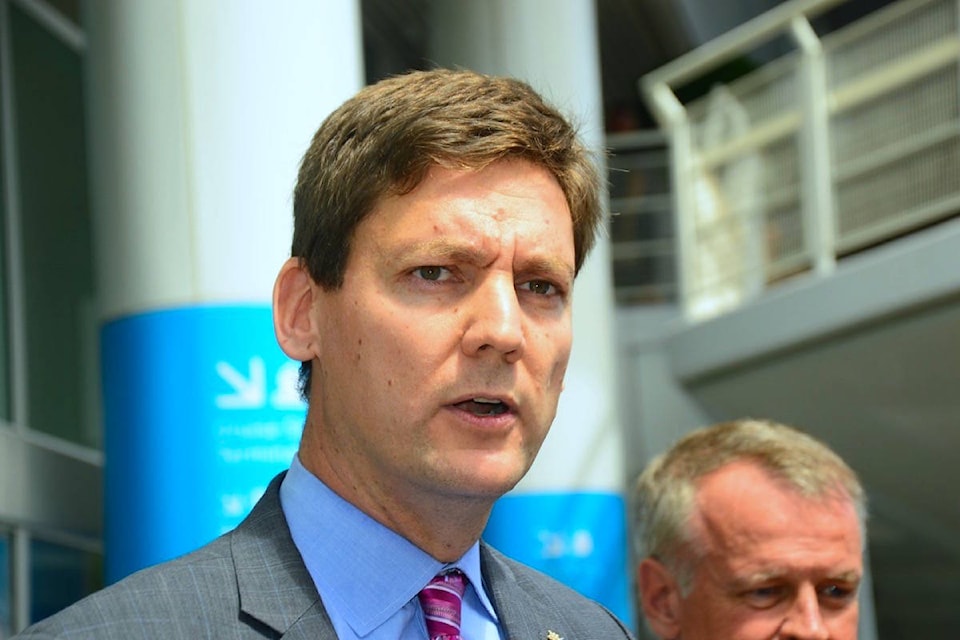ICBC rates could go up by as much as 30 per cent by 2019, a new report warns.
The Ernst & Young report, released Monday, says the average driver could pay up to $2,000 per year, as long as trends persist, the corporation still has to cover its costs through rates, and nothing is done to improve things.
Totally unacceptable!! https://t.co/1h5GkWpWb7
— Dianne Watts MP (@DianneLWatts) July 24, 2017
It points to more crashes, higher payouts for minor injuries, and a rate of claim increase that is going up faster than accident rates.
Attorney General David Eby, who is the new NDP government’s ICBC minister and past critic, wasted no time slamming the BC Liberals’ record. The NDP has long criticized the BC Liberals’ handling of the auto insurer, and promised to slow down rate hikes during the 2017 provincial election campaign.
“This report illustrates a situation that must have been apparent to the board and to the previous administration,” Eby told reporters in downtown Vancouver. “For some reasons they failed to act… we will act. A 30-per-cent rate increase will not be happening on our watch.”
.@Dave_Eby slams @bcliberals for 'mismanaging' @icbc, said they used it as a 'bank machine' pic.twitter.com/XYFHqOgQbv
— Kat (@katslepian) July 24, 2017
“The BC Liberals have been using ICBC as a bank machine, bringing money out of the corporation to claim better finances than are the case.”
RELATED: Premier John Horgan appoints new ICBC, BC Hydro chairs
The report says accident rates went up by 23 per cent between 2013 and 2016, and that vehicle repair costs skyrocketed to a total of $1.5 billion in 2016.
According to Eby, drivers who aren’t careful on B.C.’s roads might soon have to pay for it.
“Drivers should be rewarded for good driving and people who are bad drivers should have to pay higher rates,” he said. “Making them pay more because they are costing the system more just makes sense to us.”
.@Dave_Eby says that @bcndp will be fair on @icbc rates: bad drivers to pay more because they cost the province more pic.twitter.com/UozBHDMkQA
— Kat (@katslepian) July 24, 2017
But not everything the report proposes interests the new minister, who called photo radar and no-fault insurance “non starters.”
He did not elaborate, but did say he planned to reduce how many claimants felt the need to hire lawyers to deal with ICBC.
High-value cars over $150,000 are also cited as a major reason for higher premiums. Seventy per cent more luxury cars are on the road in 2016 than in 2013.
In late 2016, then-transportation minister Todd Stone announced ICBC would no longer cover cars worth more than $150,000. When a 2016 ICBC insurance forecast showed a potential hike of 42 per cent over the next five years, the agency called the numbers “hypothetical” and “potentially misleading.”
RELATED: ICBC won’t insure luxury cars, Stone says after forecast of hikes
In 2000, the average minor injury claim paid out $8,220, compared to just over $30,000 in 2016 – an increase of 365 per cent.
Serious or catastrophic injury payouts, the report notes, increased by only 25 per cent. In total, payouts for minor injuries now cost ICBC more than payouts for serious injuries.
Liberal MLA Andrew Wilkinson called Eby’s response to the report a “complete failure.”
“We now have a government telling us what they’re not doing to do and has completely failed in telling us what they are going to do,” said Wilkinson.
Vancouver-Quilchena MLA Andrew Wilkinson says the new NDP government should have have a plan in place to deal with ICBC – now. Katya Slepian/Black Press
He blamed the recent rise in insurance claims on new, high-tech vehicles with components that are expensive to repair. He said the NDP has known about that and the growing number of claims for years.
“What I would do with this report is suggest to the NDP it’s up to them to come up with a viable plan for how to face the future on ICBC,” said Wilkinson. “Where is the plan that they’ve been working on for four years?”
.@Wilkinson4BC says @bcndp should have known about @icbc issues + have a plan. No answer on what @bcliberals would do though pic.twitter.com/7KNW3BDIgs
— Kat (@katslepian) July 24, 2017
Like us on Facebook and follow us on Twitter.
